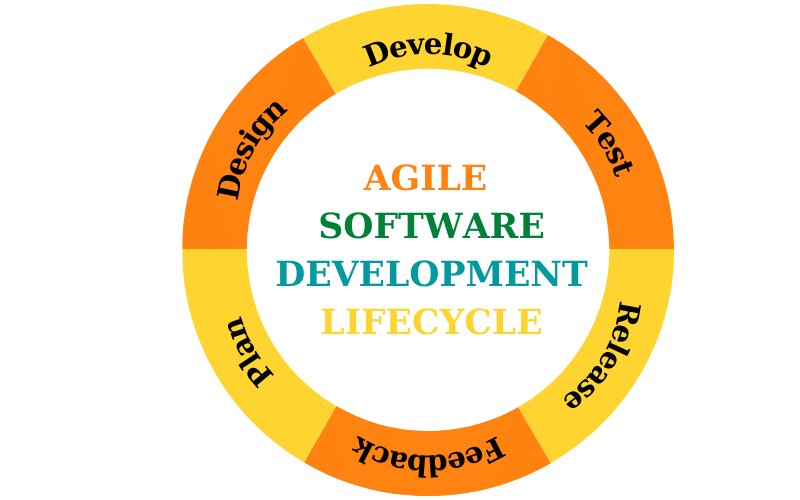
Agile Software Development Mastery 2025: Proven Guide for Faster Delivery
Introduction
Did you know that 64% of software projects still miss their delivery deadlines? Agile Software Development isn’t just a trend—it’s a game-changer for teams craving faster releases, higher quality, and happier clients. Yet many businesses struggle with scattered workflows, unclear roles, and endless scope creep before they even sprint off the starting line.
Imagine transforming that chaos into a finely tuned engine where every two-week cycle delivers measurable value. In this article, you’ll discover how to implement Agile Software Development step by step—from sprint planning and backlog grooming to real-world metrics that prove ROI. We’ll compare frameworks like Scrum and Kanban, review top tools, and showcase inspiring case studies. By the end, you’ll have a clear roadmap, downloadable templates, and a powerful call to action to kickstart your Agile journey. Let’s dive in!
Agile Software Development Methodology Explained
Agile Software Development is a flexible, iterative approach rooted in the Manifesto for Agile Software Development. It values individuals and interactions, working software, customer collaboration, and responding to change over rigid processes and tools.
Core Principles and Values
- Responding to Change over following a plan
- Individuals and Interactions over processes and tools
- Working Software over comprehensive documentation
- Customer Collaboration over contract negotiation
These four values and twelve principles foster adaptability, prioritize quick delivery, and keep teams aligned.
Iterative, Incremental Workflow
- Sprint Planning: Define sprint goals and select backlog items.
- Development & Testing: Build and test features within 1–4 weeks.
- Review & Demo: Present working software to stakeholders for feedback.
- Retrospective: Reflect on successes and areas to improve.
This cycle repeats, enabling fast learning and continuous improvement.
Common Frameworks & Practices
- Scrum: Roles (Product Owner, Scrum Master, Team) and ceremonies (Daily Scrum, Sprint Review).
- Kanban: Visual boards with WIP limits to optimize flow.
- Extreme Programming (XP): Emphasizes test-driven development and pair programming.
Tools like Jira, Trello, and Azure DevOps support backlog management, sprint tracking, and transparent collaboration. Sprint Planning Template guides your first backlog setup. Learn more from the official Agile Manifesto.
Agile vs. Waterfall—Which Is Right for You?
Agile breaks work into short iterations for continual feedback; Waterfall follows linear phases with fixed requirements.
| Aspect | Agile | Waterfall |
| Planning | Adaptive, ongoing | Fixed upfront |
| Delivery | Incremental, each sprint | Single release at project end |
| Feedback | Continuous stakeholder input | Limited until final review |
Business Impacts & Use Cases
- Agile suits evolving projects and startups needing flexibility.
- Waterfall fits well-defined, compliance-driven initiatives.
For example, a fintech startup reduced features-to-market time by 50% using Scrum sprints. Conversely, a regulated healthcare vendor used Waterfall to ensure full compliance before release.
Key Agile Frameworks & Methodologies
Different frameworks embody Agile in unique ways.
Scrum, Kanban, XP, Lean
- Scrum provides structure through roles and events.
- Kanban focuses on continuous flow and limiting work-in-progress.
- XP adds strict engineering practices like pair programming.
- Lean eliminates waste and maximizes value.
Hybrid Models & Scaling
- SAFe and LeSS scale Agile across multiple teams, aligning large organizations.
Step-by-Step Implementation Guide
Follow these steps to launch your first Agile sprint:
Building Your First Sprint
- Backlog Creation: List and prioritize all tasks.
- Sprint Planning: Select top items, estimate effort, and set a clear goal.
- Define “Done”: Agree on acceptance criteria for each task.
Roles & Team Structure
- Product Owner: Prioritizes the backlog.
- Scrum Master: Removes impediments.
- Team Members: Cross-functional engineers and designers.
Use our Sprint Planning Template to streamline these steps. Subsequently, hold daily stand-ups to keep everyone aligned.
Tool Recommendations & Comparisons
Choosing the right tools streamlines collaboration:
Jira vs. Asana vs. Trello
| Feature | Jira | Asana | Trello |
| Backlog Management | Advanced | Moderate | Basic |
| Reporting | Robust | Limited | Plugin-based |
CI/CD & Automation Essentials
Integrate Jenkins or GitHub Actions to automate builds and tests, reducing manual errors and speeding up deployments.
Agile Software Development for Startups
Startups benefit by validating ideas quickly and pivoting fast.
Lean Sprints & MVP Focus
Deliver a Minimum Viable Product in one sprint to gather real user feedback.
Pivot & Funding Strategies
Frame each sprint’s outcome as a proof point for investors. This approach helped a SaaS startup secure a $1M seed round within three months.
Real-World Case Studies
SaaS Startup Success Story
By adopting Scrum and automated testing, one startup shrank its release cycle from four months to two weeks and increased customer satisfaction by 35%.
Small Agency Transformation
A creative agency cut scope creep by 40% and improved client trust through weekly demos and strict WIP limits.
Common Pitfalls & How to Avoid Them
Scope Creep & Overcommitment
- Enforce sprint goals.
- Refuse mid-sprint changes.
Cultural Resistance & Scaling Issues
- Secure executive buy-in.
- Provide continuous coaching and training.
Measuring Success & ROI
Track these metrics to prove Agile’s value:
Agile Metrics
- Velocity: Story points per sprint.
- Burndown Charts: Remaining work over time.
Financial KPIs
- Time-to-Market: Sprint length vs. release frequency.
- Cost Savings: Reduced rework and faster feedback.
Our Agile Metrics Infographic helps visualize these measures.
FAQ Section
- What is Agile Software Development?
Agile Software Development delivers working software in short cycles, adapting to change and maximizing value. - Why is Agile Software Development important?
It cuts time-to-market by up to 40% and reduces defects by 30%. - How do you implement Agile Software Development?
Form a cross-functional team, create a backlog, plan sprints, hold daily stand-ups, and review outcomes. - How to plan an Agile Software Development sprint?
Prioritize backlog items, estimate effort, set goals, and define done criteria. - Agile Software Development vs. Waterfall—What’s the difference?
Agile delivers incrementally with continuous feedback; Waterfall delivers once after sequential phases. - What are common mistakes in Agile Software Development?
Skipping retrospectives, overcommitting, and poor backlog management. - Why isn’t Agile Software Development working for my team?
Often due to lack of leadership support and incomplete training.
Conclusion & Clear CTA
Agile Software Development can transform your delivery cycles, boost team morale, and delight stakeholders. Download our free Agile Sprint Planner or book a discovery call today to kickstart your Agile journey. With proven strategies, real-world examples, and actionable templates, you’re equipped to master Agile in 2025 and beyond.
Internal Links:
- Sprint Planning Template
- Agile Manifesto Deep Dive
- Case Study: Startup Agile Success
- Agile Roadmap Phases
- Advanced Agile Masterclass
External Links:

